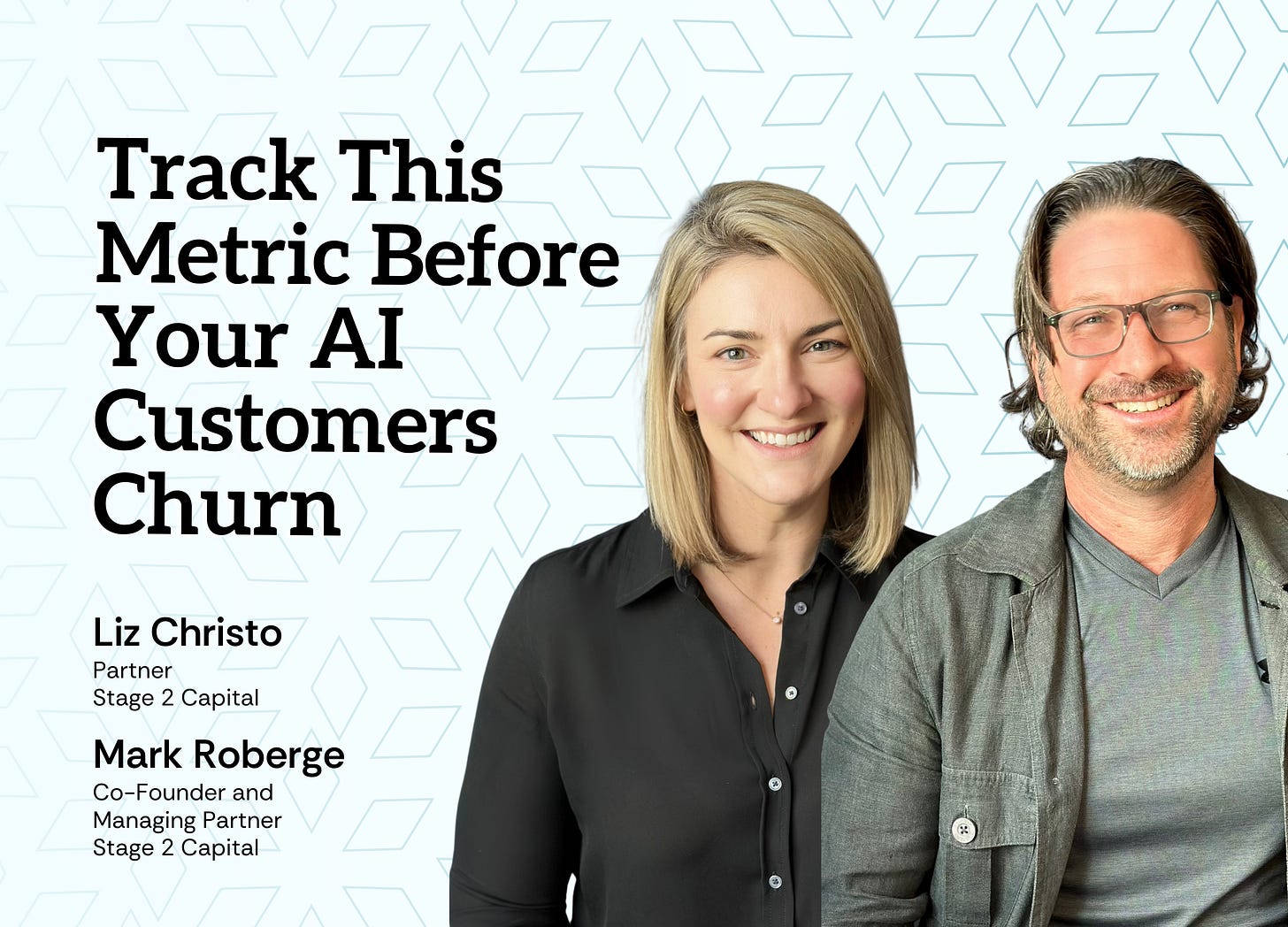Track This Metric Before Your AI Customers Churn
Fast-growing AI startups risk losing customers unless they monitor real product usage, not just ARR.
DEAR STAGE 2: We are an AI-native application that’s growing fast – hit $1M ARR in our first 6 months of selling. While we are signing customers to annual contracts, we know that in many cases this spend is still considered experimental and we have a lot of work to do to gain commitment for enterprise-wide roll out or even expansion. How can we ensure our customers are realizing value and lock in renewals? ~RETENTION FOCUSED
DEAR RETENTION FOCUSED: This is a very common theme and a hot topic in both GTM circles and board rooms. Fast traction doesn’t always mean staying power. Especially not in AI.
In the early days of a startup, your revenue is still fragile. A 2024 report from Menlo Ventures showed that a whopping 60% of generative AI spend is coming from innovation or experimental budgets. Translation: today’s ARR is not necessarily tomorrow’s renewal. And if your product doesn’t prove its value beyond “cool tech,” you risk being one of the nine tools your buyer doesn’t keep.
Which brings us to the core of your question: how do you demonstrate value, early and often, to drive long-term retention and expansion?
Our answer? Leading Indicators of Retention (LIR).
This is not a new topic for Stage 2…you may have seen Mark Roberge lay out the framework for LIR in the Science of Scaling, or catch my post on evolving this metric for the enterprise segment. Any way you cut it, we are fully bought in that product usage data is more important than revenue cohorts for early-stage businesses, especially in our current reality of experimental AI budgets.
ARR Isn’t the Signal You Think It Is
ARR is a lagging indicator. For AI-native apps especially, it’s often a mirage of product-market fit. It’s not enough to sign the deal—you need to understand how customers are actually using your product.
Instead of fixating on revenue, focus on tracking real customer behavior that aligns with value delivered. What specific product actions signal they’re deriving value and will see real ROI? What’s the metric that, if it drops, makes you sweat about their renewal?
Track LIR Monthly—Not Just at Renewal Time
You can’t afford to wait for renewal conversations to start measuring impact. If you’re still early (<15–20 customers), we recommend starting with customer-level tracking. For each customer you should track:
ICP fit (Yes/No)
A primary usage metric you believe aligns with value (LIR)
Bonus data: support tickets, bugs reported, time to go live
Grab our template to begin tracking one of three common LIR methods:
Static Threshold: Example: A customer is “green” if they complete 5+ actions/month. Keep it simple and measure if they’re hitting that baseline.
Static % of Predicted Usage: If different customers have different end goals, set a % threshold toward their goal. Are they using at least 25% of what you expect them to?
Progressive % Goals: For more sophistication, track if customers are hitting progressive benchmarks: e.g., 10% by month 1, 20% by month 2, etc.
Ultimately, the big question is what product usage metric aligns to customer value AND can be instrumented so it’s relatively easy to review on a monthly basis, and eventually by cohort. This number should be shared monthly, included in the board deck (Mark would argue as your first slide!) and act as a north star for decision making because it represents the health of your customer base. It’s simple, actionable, and tells you if churn is hiding beneath the surface.
In AI, your champion might be buying you—but they’re also buying 9 other vendors. They’re experimenting. They’re not ready to commit. Your job? Show them why your tool works, not just why it’s novel. Customer value is what will ultimately drive expansion and get you out of the experiential budget line.
Don’t wait for churn to surprise you—get ahead of it with Leading Indicators of Retention.
Until next week!




This really hits home. Especially the idea that ARR can be a mirage if usage isn’t truly embedded in the customer's workflow. I’ve seen this play out firsthand—tools that looked like a win on paper but never made it past the “cool experiment” phase.
We’ve been leaning into tracking LIRs ourselves, and tools like (DexKor) have helped give a clearer picture of real usage and engagement across success and support touchpoints. It's definitely a shift from celebrating logos to deeply understanding adoption patterns early on.
Appreciate how clearly this breaks down a problem so many teams quietly struggle with.
Fantastic read, Liz. Love this new set of metrics and ways to consider customer success, retention, and value drivers. Thank you for spearheading such an important set of topics.